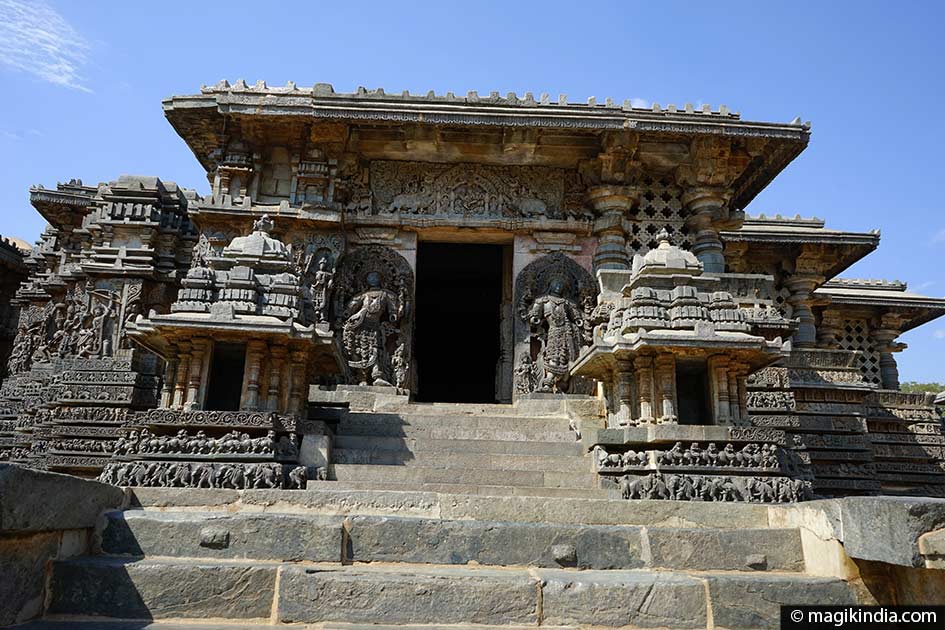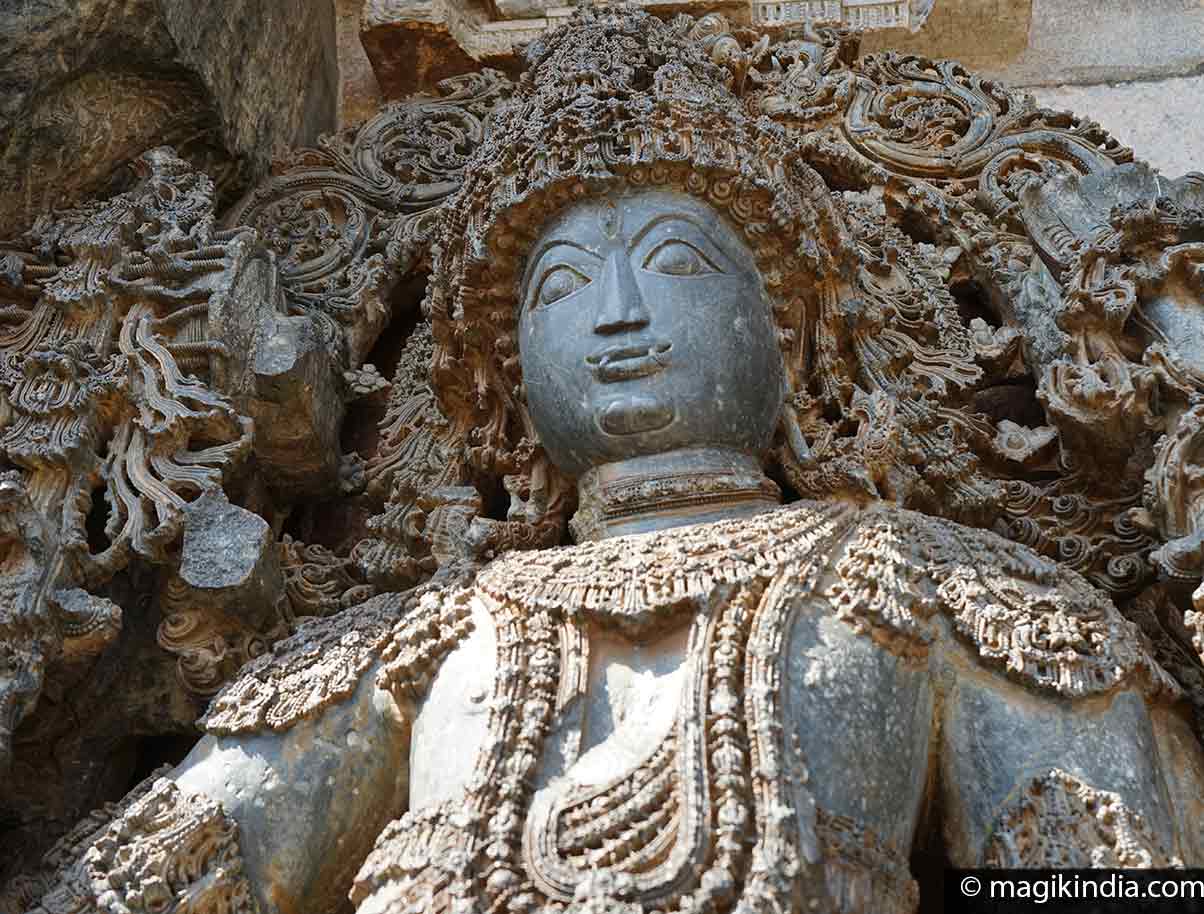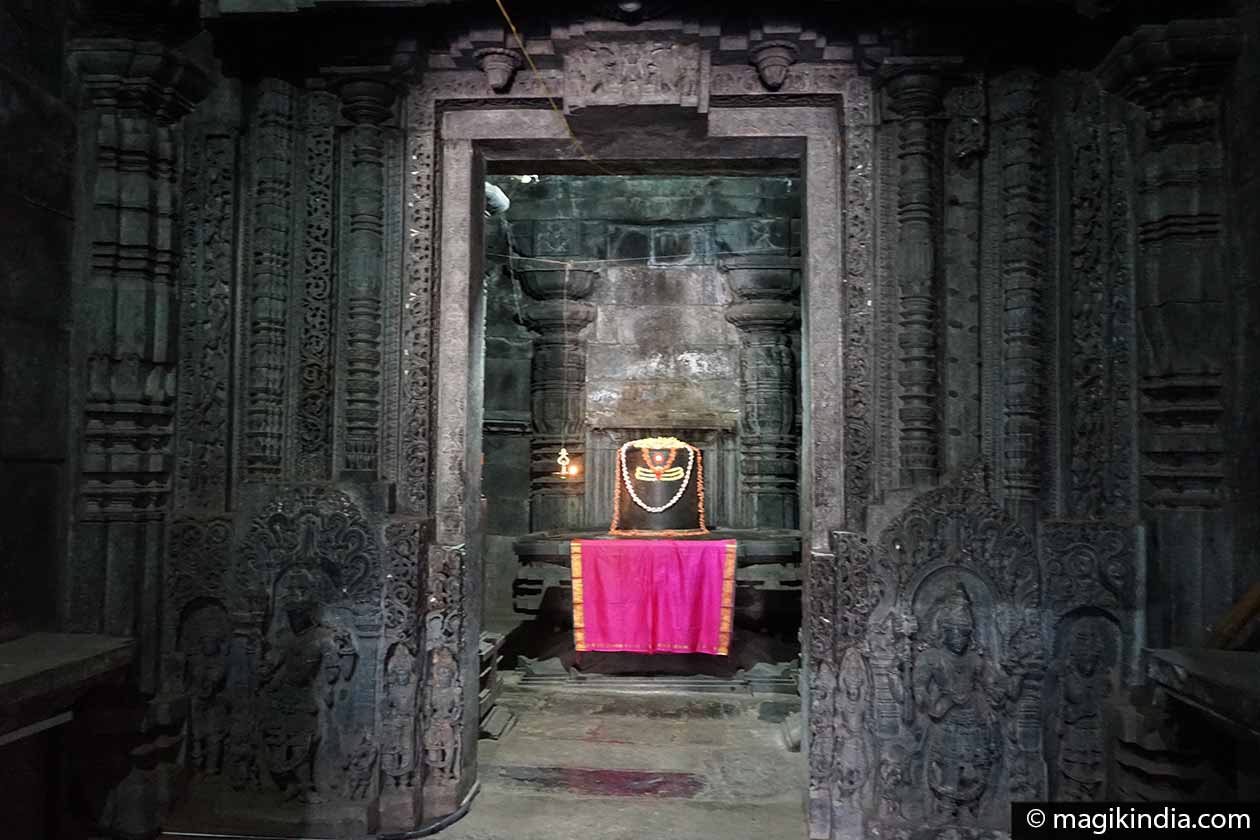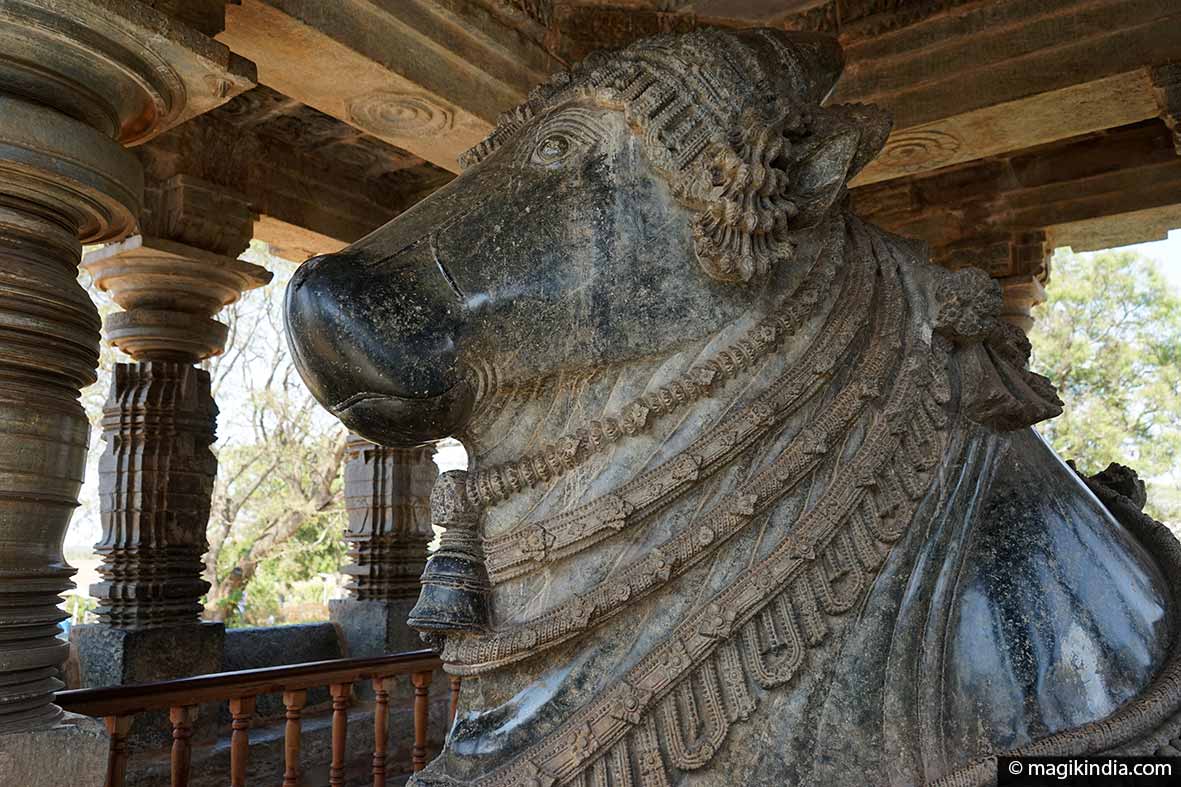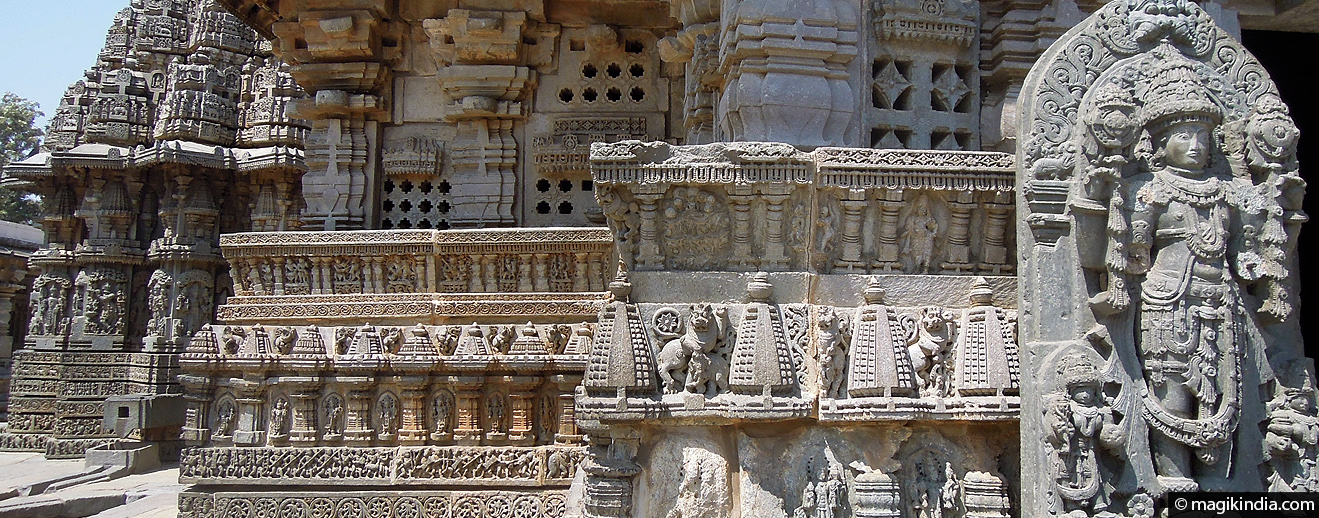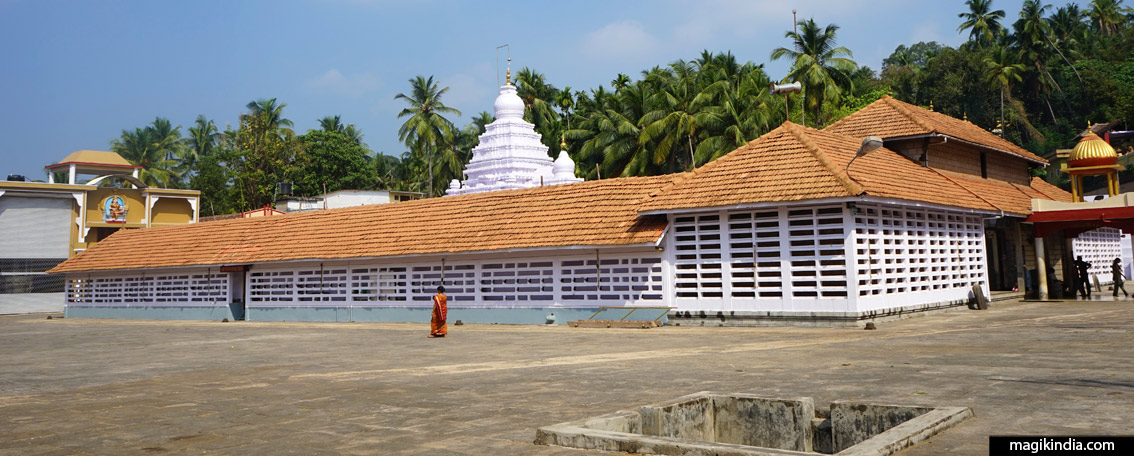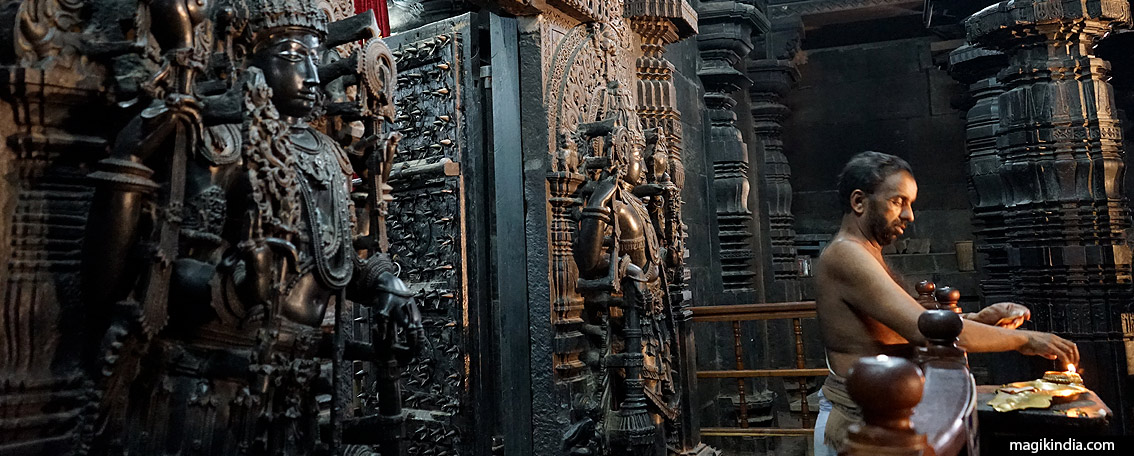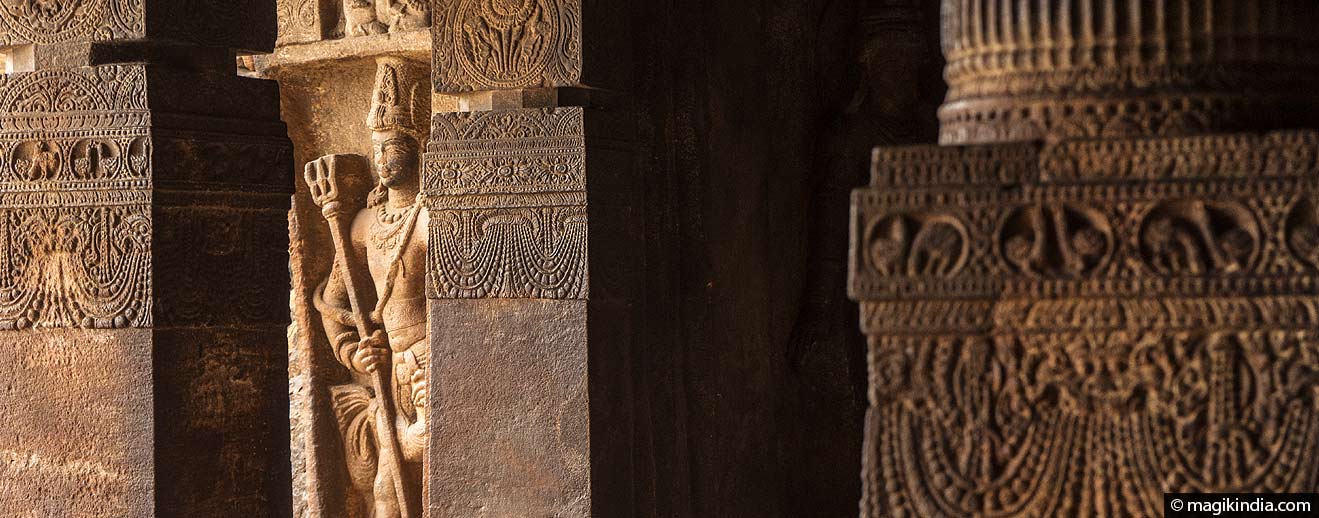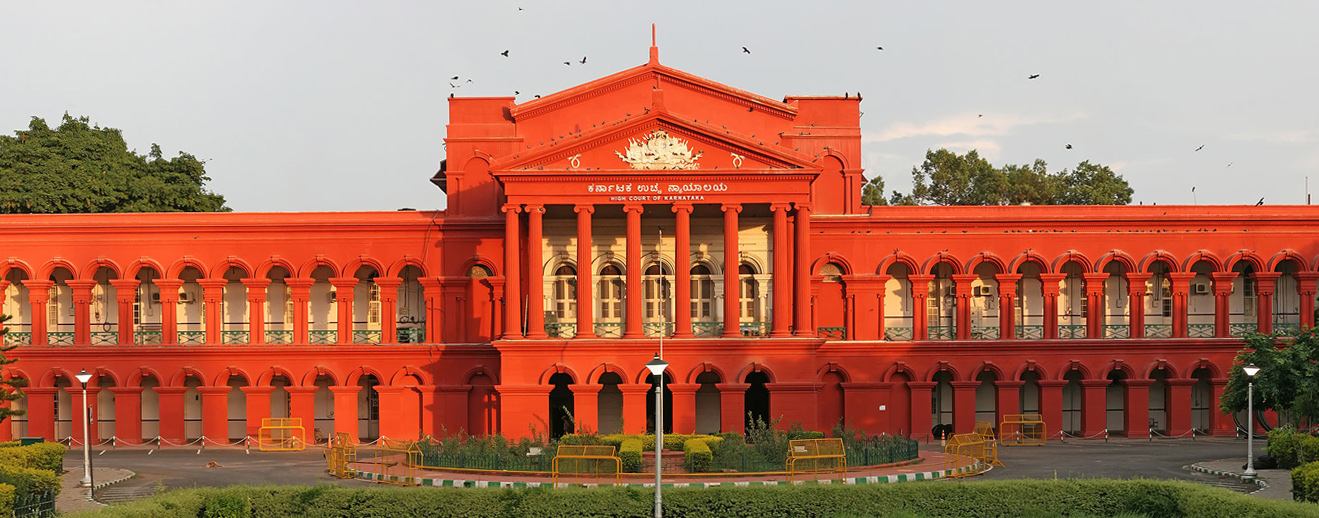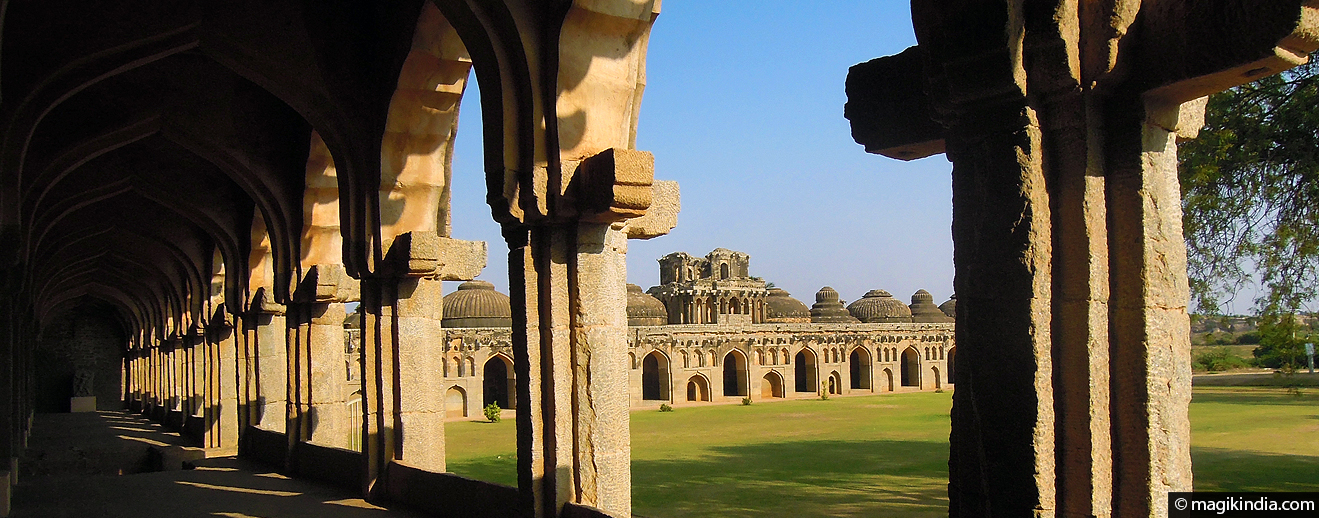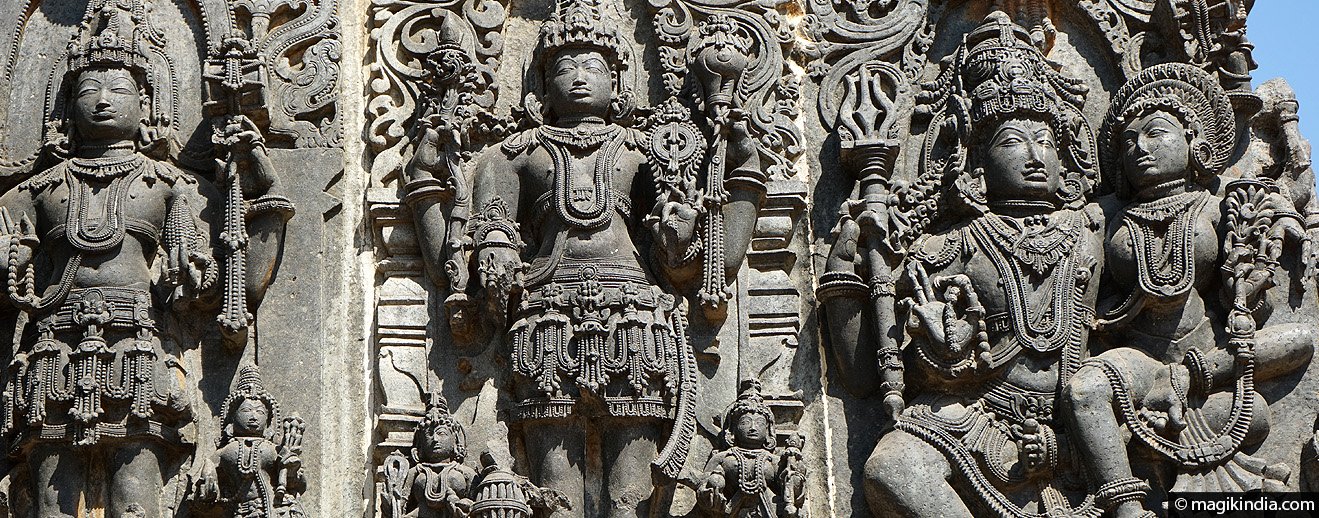
Halebidu (Halebid), wonder of Hoysala architecture
Halebid, or Halebidu, was the capital of the Hoysala empire in the 12th and 13th centuries. This dynasty has left a monument of unparalleled splendor, the temple of Hoysaleswara. The richness and finesse sculptural details are undoubtedly the most exquisite example of Hoysala architecture.
The temple of Halebid was built around the year 1121 CE, during the reign of King Vishnuvardhana. It was abandoned in the 14th century when the armies of Malik Kafur sacked and looted the town.
The temple, built of steatite (soap-stone), is a dvi-kuta vimana, meaning that it consists of two twin temples built on the same platform: Hoysaleswara, named after the Hoysala king Vishnuvardhana, and Shantaleswara, named after his queen, Shantala Devi.
The temple is dedicated to Shiva represented by a Lingam, universal symbol of Shiva. There are also two statues of Shiva’s mount, the sacred bull Nandi.
Though the inside of the temple is fairly simple, with the lathe-turned pillars typical of Hoysala architecture, the outside will constantly amaze you with the richness and detail of its carvings.
The walls of the temple are covered with an infinite variety of representations of Hindu mythological themes, animals, birds and shilabalikas or dancing figures. Each sculpture is unique; no two are alike.

